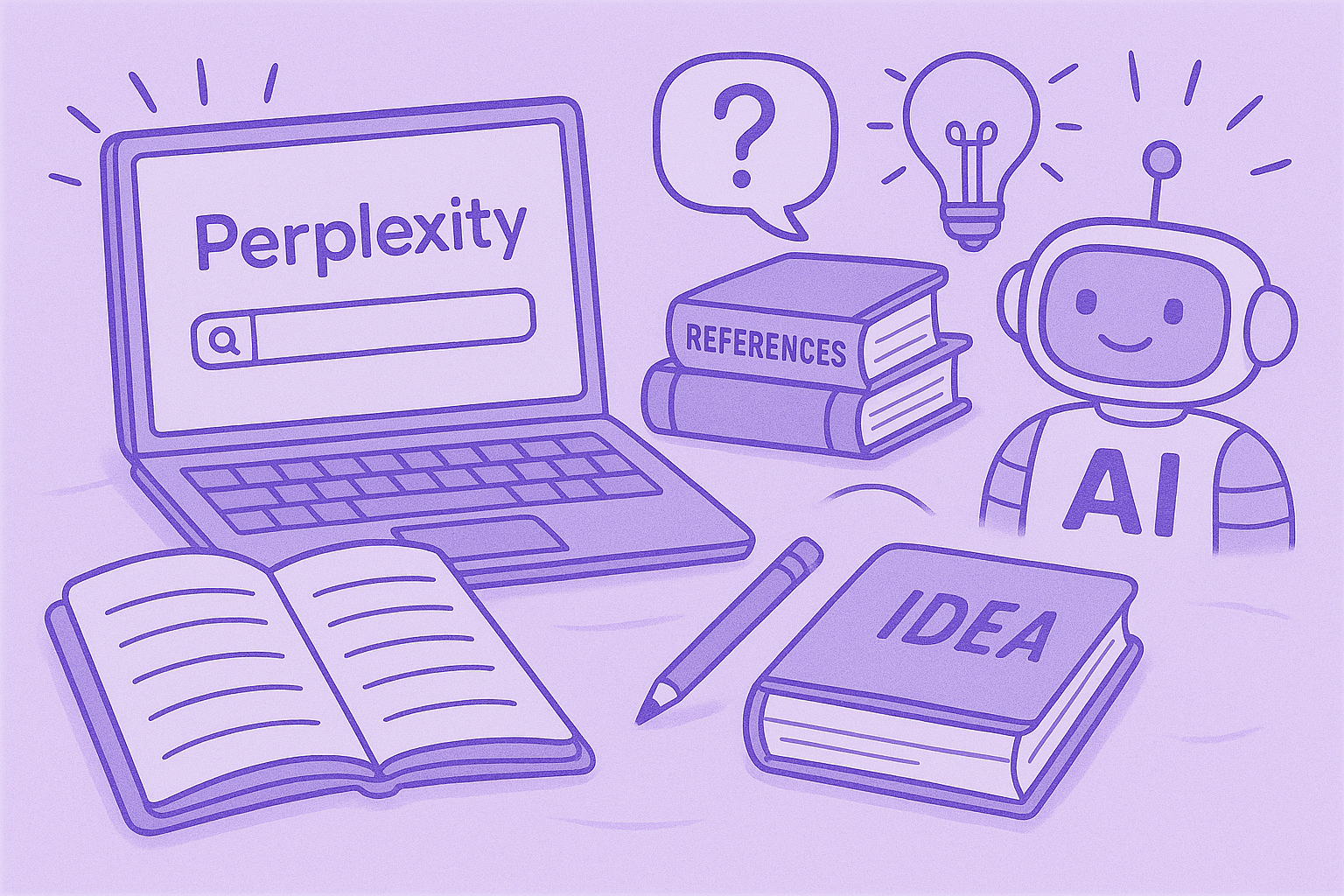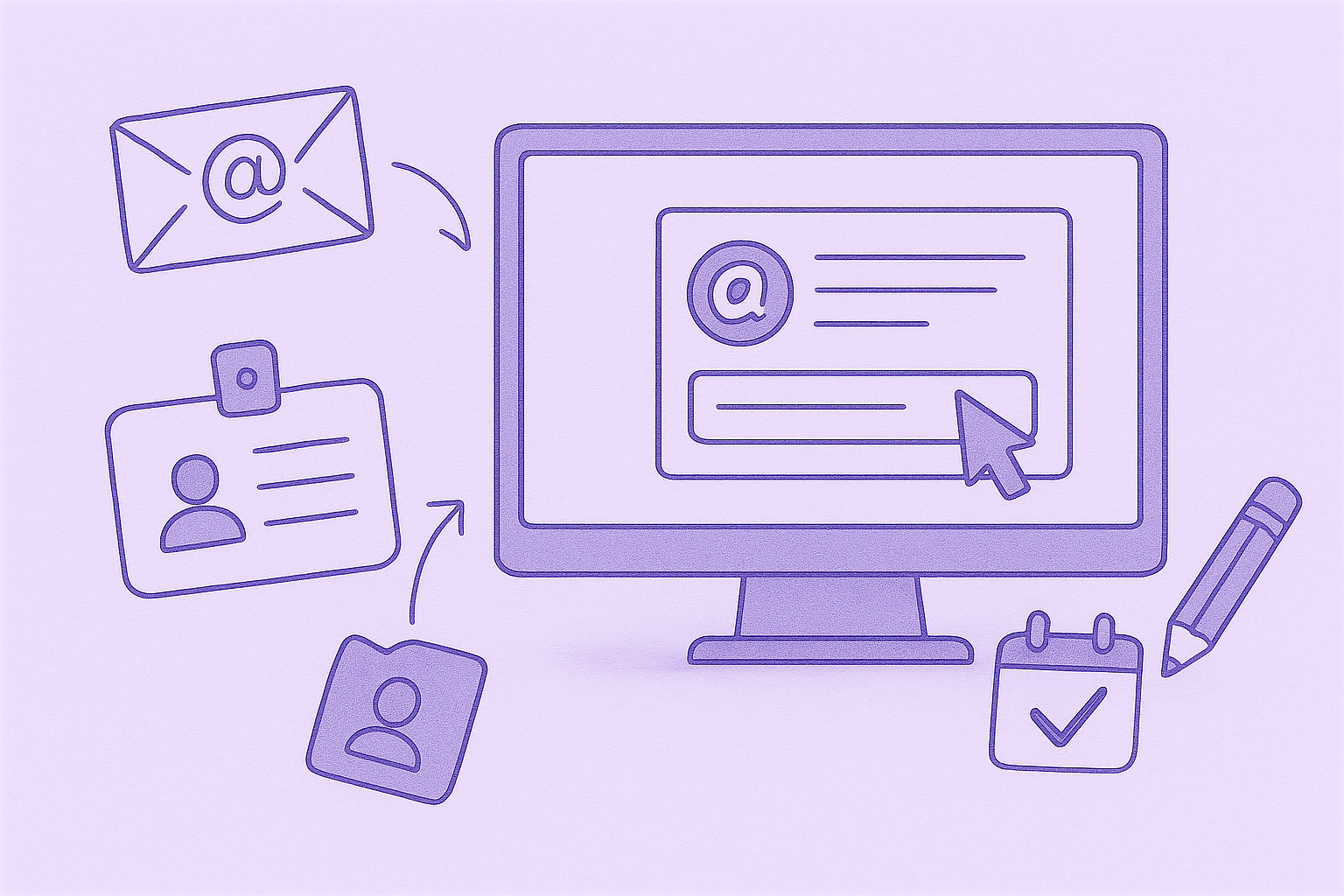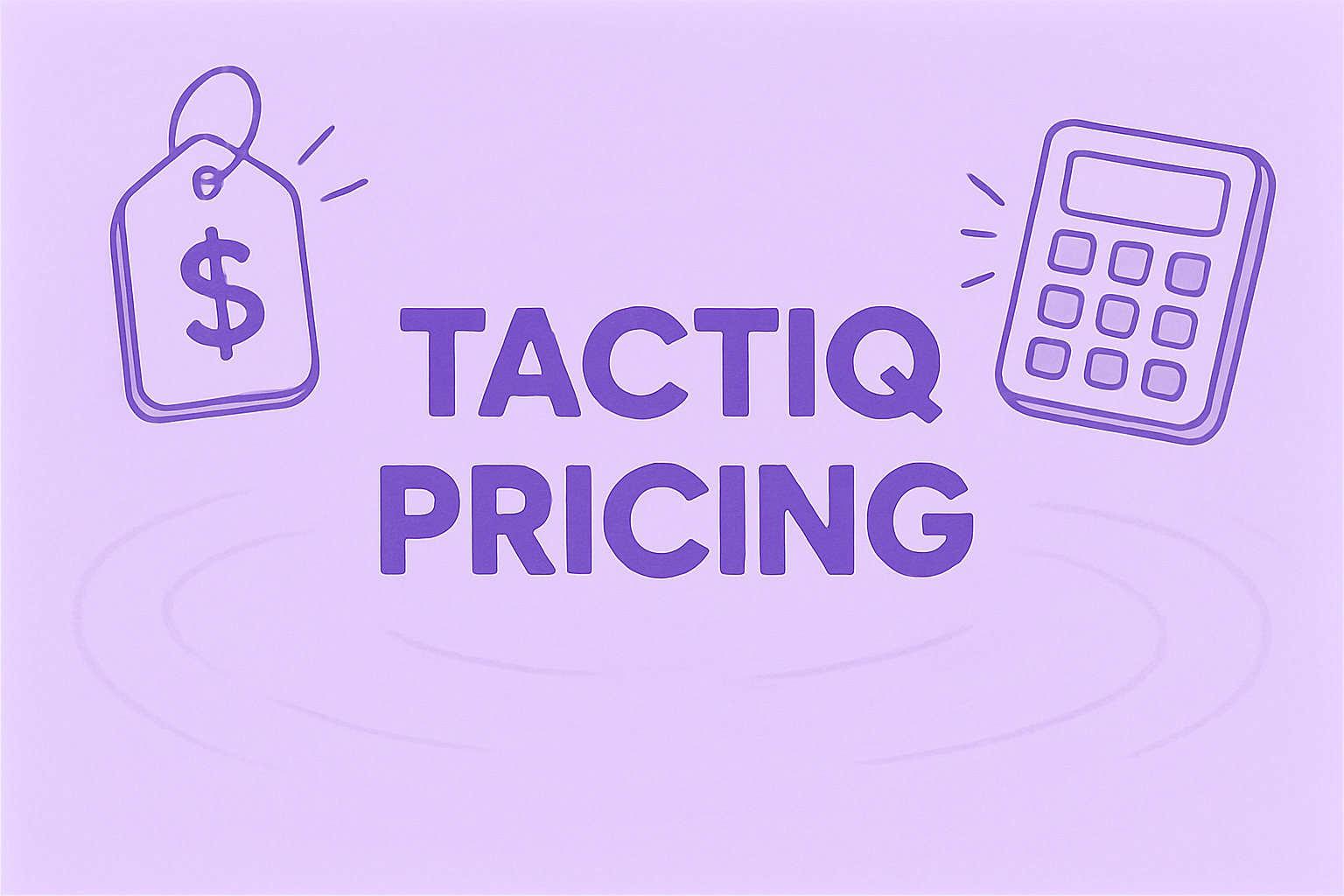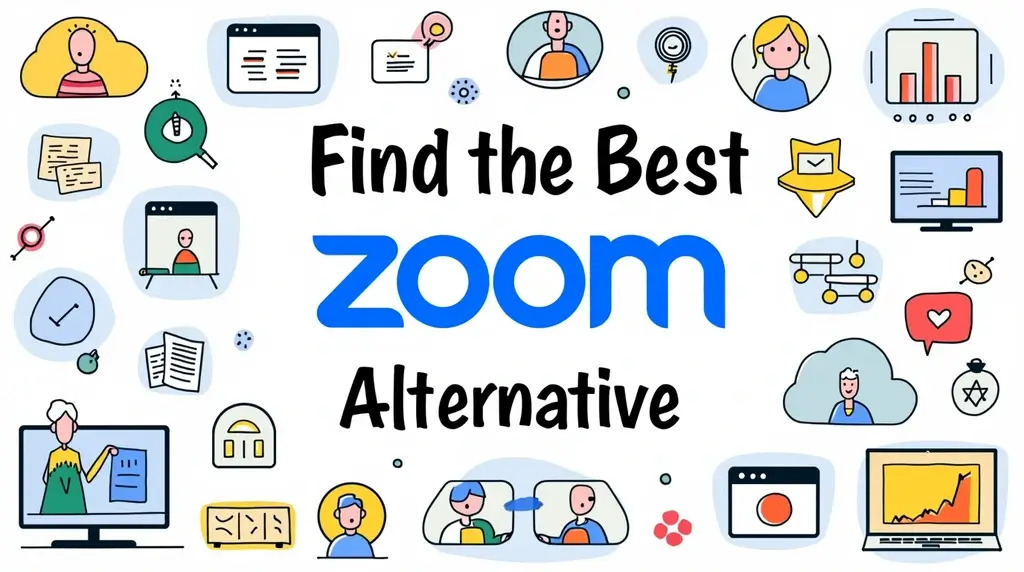15 Effective Leadership Goals for Team Leaders
Discover 15 effective leadership goals that can help team leaders enhance their skills and improve team performance.
✅ Free meeting recording & transcription
💬 Automated sharing of insights to other tools.

Image source: pch.vector on Freepik
Are you looking to enhance your leadership skills and lead your team to success? Setting clear and effective goals is crucial for any team leader aiming to foster a productive and positive environment.
In this article, we'll explore 15 essential leadership goals that can help you become a more efficient and inspiring team leader.
Whether you're new to leadership or looking to refine your approach, these goals will guide you in building stronger relationships and achieving better outcomes with your team. Let’s dive into what makes these goals integral to successful leadership.
What Are Leadership Goals?
Leadership goals are specific objectives that team leaders set to improve their effectiveness and the performance of their teams. These goals are designed to guide leaders in developing their skills, enhancing team dynamics, and achieving organizational success.
By setting and working towards these goals, leaders can foster a positive work environment, motivate their team members, and drive their teams toward achieving collective objectives.
How to Set Leadership Goals
Setting leadership goals is a crucial part of a team leader’s journey toward effective management and team success. Goals help leaders stay on track, focus on improvement, and drive their teams forward.
Here’s how to set leadership goals.
- Identify strengths and weaknesses
- Consider your goals
- Use the SMART framework
- Prioritize goals
- Examine, evaluate & adjust
1. Identify Strengths and Weaknesses
The first step in setting any goals is to understand where you currently stand. As a team leader, take a comprehensive look at both your strengths and weaknesses.
Understanding your strengths allows you to leverage them more effectively and also model these strengths for your team.
Recognizing your weaknesses, on the other hand, can pinpoint areas for improvement and professional development.
Start by asking for feedback from peers, supervisors, and your team members. You can also reflect on past projects:
- What went well?
- What didn’t?
- Are there patterns in the feedback or recurring challenges that you face?
Consider tools like SWOT analysis (Strengths, Weaknesses, Opportunities, Threats) to structure your assessment. This helps you set a solid foundation for realistic and relevant goal-setting.
2. Consider Your Goals
Now that you have a clearer understanding of your strengths and weaknesses, start thinking about what you actually want to achieve as a leader. These goals might relate to enhancing your communication skills, improving team performance, or developing new leadership strategies.
Then, think about both short-term and long-term goals:
- Short-term goals may be as simple as increasing meeting efficiency, beginning to implement blind hiring practices, or increasing team engagement over the next quarter.
- Long-term goals might involve advancing your career to the next leadership level or significantly improving your team's productivity over the year.
Ensure that your goals not only aim to address your weaknesses but also build on your strengths.
3. Use the SMART Framework
To create leadership smart goals, you must have an accurate picture of what you’re after. The easiest way to achieve this is with the SMART framework in mind:
- Specific: get clear about what it is that you want to achieve
- Measurable: include precise metrics to measure progress
- Achievable: while goals should be ambitious, they must also be realistic
- Relevant: goals should be aligned with broader business objectives
- Time-bound: assign deadlines to provide a sense of urgency and prompt priority setting
For example, instead of setting a goal to “improve sales skills,” a SMART goal would be, “Complete a sales coaching course by Q3 to improve sales performance, aiming to increase sales revenue by 10% by the end of Q4.”
4. Prioritize Goals
Not all SMART leadership goals are created equal, and trying to tackle them all at once can lead to spread too thin.
Evaluate your goals based on their relevance and impact:
- Which goals will have the most immediate impact on your team’s performance and morale?
- Which goals align closely with your organization’s current business strategy?
- Does this goal get you closer to becoming a business leader?
Create a prioritized list and focus on tackling the goals that will make the most significant difference first. This focus helps manage your time and resources effectively, ensuring you’re not just busy, but productive.
5. Examine, Evaluate & Adjust
Good leaders regularly examine and evaluate the progress toward their goals. Set aside time monthly or quarterly to review your goals. This review should involve not just checking if goals have been met but also understanding the factors contributing to the success or failure of these goals.
Additionally, be prepared to adjust your strategies based on these evaluations. If a particular approach isn’t working, tweaking your plan or even setting new goals might be necessary.
15 Personal Leadership Development Goals
To help you develop a well-rounded leadership style that not only enhances your capabilities but also significantly improves your team’s performance and satisfaction, we came up with 15 factual examples of leadership development goals.
Here are some personal leadership development goals:
- Develop active listening skills
- Embrace constructive criticism
- Lead adaptively in change
- Boost emotional intelligence
- Strengthen self-confidence
- Ensure transparency
- Provide targeted and constructive criticism
- Cultivate strong relationships
- Show genuine appreciation
- Optimize time management
- Delegate tasks effectively
- Be the standard
- Act as a mentor and coach
- Advance decision-making capabilities
- Reduce micromanagement
1. Develop Active Listening Skills
The first step to effective listening is to clear your mind of any distractions. Before starting a conversation, make sure to remove any distractions like phones or computers and focus entirely on the person speaking.
Remember, being an active listener is also about showing you're engaged. When someone is speaking to you, nod your head, maintain eye contact, and make affirming noises like "mm-hmm" to show you’re involved. Additionally, keep your posture open and maintain eye contact to show respect and attentiveness.
Remember, when you practice active listening, it's important to let the speaker finish their thoughts without interruption. Then, make sure you have understood the speaker correctly by reflecting and asking questions. You might repeat what you’ve heard in your own words and confirm with the team member, like saying, “So, you’re saying that you feel...”
PRO TIP: When improving active listening skills, understanding the speaker’s point of view is critical. Try to see things from their perspective, which helps you respond more effectively. Even if you don’t agree with the speaker, understanding their viewpoint can help smooth over conflicts and improve team cohesion.
2. Embrace Constructive Criticism
Knowing how to receive constructive criticism is a crucial leadership skill that requires you to take each piece of criticism as an opportunity to discover something new about your leadership and how it can be improved.
Firstly, create a welcoming environment where team members feel comfortable sharing their thoughts. Reassure everyone that their insights are seen as positive and necessary for growth.
Then, when receiving feedback, listen carefully and objectively without immediately crafting a response or letting emotions get in the way. If certain points aren't clear, asking follow-up questions can be incredibly helpful. This not only helps clarify the feedback but also shows you're genuinely interested in understanding and using the advice you've been given.
After processing the feedback, take some time to think about how you can apply what you've learned. Identify the most valuable aspects of the feedback and develop a plan to make specific changes. This turns the criticism into a practical tool for enhancement.
Moreover, let your team see the changes you've made based on their feedback. This shows that their input is effective and valued, and it helps strengthen the trust and respect within the team.
3. Lead Adaptively in Change
Being an effective leader during change starts with being informed. Make it a habit to keep up with the latest trends in your industry and any upcoming changes within your organization.
Here are a few ways to stay informed as a team leader:
- Read relevant articles
- Attend workshops
- Engage with thought leader
- Stay proactive
Remember, clear communication is crucial, especially when navigating through change. Keep your team in the loop by sharing updates regularly. Explain the changes, the reasons behind them, and how they will affect the team.
Additionally, help your team adjust to changes by providing the necessary resources. This might include access to new training programs, the latest tools to improve efficiency, or additional support during busy periods.
When your team sees you tackling changes confidently and constructively, they’re more likely to adopt a similar approach.
4. Boost Emotional Intelligence
Emotional intelligence involves understanding your own emotions and those of others to better manage interpersonal interactions and decision-making.
Here’s how you can build emotional intelligence as a team leader:
- Understand Your Emotions: Begin by becoming more aware of your own emotions. Pay attention to what feelings you experience throughout the day and what triggers them. This gives you a chance to adjust your behavior before your emotions dictate your actions.
- Practice Empathy: Make a conscious effort to see situations from your team members' points of view. Listen actively when they speak, and validate their feelings without immediately jumping to solutions or judgments.
- Manage Your Responses: Once you’re aware of your emotions, work on regulating them. Techniques such as deep breathing, taking a short walk, or a moment to collect your thoughts can help calm your immediate reactions, allowing you to respond more thoughtfully.
- Improve Social Skills: Communication is a significant part of emotional intelligence, especially for business leaders. Enhance your communication skills by clearly expressing your thoughts and being considerate of others' opinions.
- Seek Continuous Learning: Emotional intelligence is not fixed; it can be developed over time with intention and practice. Attend workshops, read books, or take courses on emotional intelligence.
Remember, more emotionally intelligent leaders can foster a positive work environment, create a more dynamic team, and navigate workplace challenges more effectively.
5. Strengthen Self-Confidence
Confident leaders inspire trust and respect, which are essential for fostering a positive work environment and motivating team members. To build and maintain strong self-confidence to enhance your leadership capabilities, start by setting small, achievable goals for yourself. Accomplishing these goals will provide you with concrete evidence of your capabilities, boosting your self-esteem.
Over time, as you accumulate successes, your confidence in handling bigger challenges will naturally grow. This practice also helps in establishing a track record of reliability and competence, both for yourself and in the eyes of your team.
Remember: one of the foundations of self-confidence and leadership effectiveness is knowledge. The more you know, the more confident you will feel. Invest time in preparing for various meeting scenarios, presentations, and decision-making.
However, acknowledge that setbacks are a natural part of business operations. Instead of allowing failures to undermine your self-confidence, view them as valuable learning opportunities. Analyze what went wrong, identify the lessons, and think about how you can apply this knowledge to improve future efforts.
Lastly, the way you talk to yourself can significantly affect your self-confidence. Practice positive self-talk by affirming your strengths and capabilities to replace negative thoughts with positive, encouraging ones.
6. Ensure Transparency
Open communication is the cornerstone of transparency. Make it a practice to regularly share updates about the company, the team's progress, and any changes that might impact your team members.
When communicating, be clear and direct, and ensure that your message is accessible to everyone. This could be through regular team meetings, emails, or even an internal newsletter.
If meetings are your go-to, to maximize their impact and ensure full transparency, you’ll need a strategic approach. This can be done fairly easily with an AI virtual meeting automation platform like MeetGeek.
Essentially, MeetGeek automatically records, transcribes, summarizes, and sends automated follow-ups of your meetings, so you spend more time on your discussions and less on meeting-related tasks.
Here’s how MeetGeek can streamline your meetings and help you become a better leader:
- Meeting recording and transcription: MeetGeek automatically records and transcribes every team meeting. This feature is invaluable for team members who are unable to attend in real-time, allowing them to catch up on discussions at their convenience and stay aligned with team decisions and projects.
- Key point and action item detection: MeetGeek uses AI to extract the key points and action items from meetings. This ensures that everyone can focus on the most critical information, quickly understand the main outcomes, and efficiently plan future actions without needing to review hours of recordings.
- Shareable meeting summaries: After each meeting, MeetGeek generates concise, shareable meeting notes that can be easily distributed among team members to keep the entire team informed and aligned, facilitating a cohesive team environment.
- Integration with CRM and collaboration tools: MeetGeek is an AI meeting assistant that integrates with your tool stack, enhancing your team’s workflow by ensuring that insights and decisions from meetings are effortlessly incorporated into your broader project management strategies.
- Time-stamped notes and comments: With MeetGeek’s time-stamped notes and comments, team members can asynchronously discuss and provide feedback on specific segments of the meeting, ensuring continuous collaboration.
- Mobile functionality: MeetGeek’s mobile app brings all these powerful features to your offline interactions. Just a few taps on your device, and you can have your in-person meetings recorded, transcribed, and summarized, ensuring that your face-to-face engagements are as productive as your virtual ones.
7. Provide Targeted and Constructive Feedback
Effective feedback helps team members understand what they are doing well and where they can improve, enhancing their skills and boosting overall team performance. When providing feedback, be specific and focus on observable behaviors rather than on personal traits.
EXAMPLE: Instead of saying someone "isn't committed," point out specific instances where they may have missed deadlines or meetings. This helps prevent feelings of personal attack and keeps the conversation focused on actions and outcomes.
Additionally, the setting in which you provide feedback can significantly impact how it's received:
- Private feedback is often more appropriate for discussing sensitive or critical issues, as it allows the individual to focus on the message without the pressure of an audience.
- Public recognition, on the other hand, can be highly motivating when acknowledging accomplishments and successes.
Moreover, pay attention to the way you deliver feedback. Start with a few check-in questions. Then, proceed with positive feedback before moving on to areas that require improvement. This "positive sandwich" approach can help maintain the individual’s confidence and openness to your message, so prioritize frequent positive feedback.
Remember, feedback should be a dialogue, not a monologue. After sharing your observations, give the other person a chance to respond. Ask open-ended questions like, "How do you feel about this project?" or "What do you think you could have done differently?" This encourages self-assessment and shows that you value their perspective.
PRO TIP: Instead of just pointing out what’s wrong, offer practical advice or steps on how they can improve. For instance, if a team member struggles with time management, suggest specific tools or techniques such as time blocking or prioritization strategies.
Lastly, keep in mind that feedback doesn’t end with a single conversation, so make sure to follow up after a reasonable period. This shows that you are invested in their growth and are available to provide further guidance.
8. Cultivate Strong Relationships
Open and frequent communication is the foundation of any strong relationship. Take a genuine interest in the professional and personal development of your team members.
Additionally, encourage an atmosphere where team members feel comfortable sharing their ideas, concerns, and feedback. This not only helps in resolving potential issues early but also strengthens the trust and rapport between you and your team.
However, while it’s important to be friendly and supportive, it’s also vital to respect professional boundaries. Maintain a balance where you can be a confidant and a coach without overstepping personal boundaries.
PRO TIP: As a leader, being accessible to your team is crucial. Ensure that your team knows they can come to you with problems or when they need advice. Let them know that their opinions are valued and that you are there to support them, not just oversee their work.
9. Show Genuine Appreciation
Recognizing the efforts and achievements reinforces the positive behaviors that contribute to the team's success.
When you recognize a team member's effort, be specific about what you are praising. Instead of general statements like "Great job," point out specific aspects of their performance that impressed you.
For example, "I really appreciated how you handled that client's concerns with such detailed attention and professionalism." This specificity makes your appreciation feel more personal and relevant, showing that you pay attention to their work.
While verbal appreciation is invaluable, small, thoughtful tokens can also express gratitude effectively. Consider what might be meaningful to the individual. It could be a gift card to their favorite shop, a book related to their passions, or even an extra day off.
Alternatively, another way to show genuine appreciation is by investing in a team member’s professional development. Offering opportunities for training, advanced courses, or assigning them to high-profile projects demonstrates your trust in their abilities and your desire to see them grow.
10. Optimize Time Management
Optimal time management empowers you to meet deadlines, decrease stress, and achieve a healthier work-life balance, which sets a positive example for your team.
Here’s how to optimize time management as a team leader:
- Prioritize Tasks: The Eisenhower Box can help you decide which tasks to do immediately, schedule for later, delegate to others, or eliminate altogether. This ensures that you spend your resources on activities that align with your goals.
- Set Clear Goals and Deadlines: Break larger projects into smaller, manageable tasks, and set deadlines for them. To avoid stress and disappointment, ensure your deadlines are realistic.
- Use Technology Wisely: Calendar apps can help you schedule and track your commitments. Similarly, project management software can help with organizing tasks, especially when collaborating with your team.
- Delegate Effectively: Assess the strengths and capacities of your team members, and delegate tasks accordingly. This not only frees up your time for critical leadership duties but also helps in developing your team’s skills and boosting their confidence.
- Batch Similar Tasks: Group similar tasks together to and reduce the task-switching lag. For example, schedule all your meetings in one part of the day or set aside specific times for email checking and responding.
- Build in Time for Breaks: Ironically, one of the best ways to optimize time management is to schedule time to step away from work. Techniques like the Pomodoro Technique, where work is broken into intervals separated by short breaks, can be particularly effective.
- Review and Adjust Regularly: At the end of each week, reflect on what tasks consumed most of your time and whether this allocation aligns with your priorities to make necessary adjustments to your approach and become more efficient over time.
PRO TIP: When it comes to time management, meetings take up a lot of space. If you’re a middle manager, you probably spend 35% of your time in meetings, and if you’re in upper management, that percentage can go up to 50%.
If you want to reduce these numbers, MeetGeek has your back. MeetGeek's analytics dive deep into your meetings, offering KPIs like talk time, call sentiment, participation rates, and more.
This not only improve meeting quality over time, but also helps you prioritize the conversations that are important and skip the ones that are irrelevant.
11. Delegate Tasks Effectively
The first step in effective delegation is to know your team members' strengths, weaknesses, and preferences. Spend time with your team, observe their work, and get feedback from other projects to gauge their skills and interests accurately.
Then, identify tasks that are lower priority or those that serve as good development opportunities for team members. Tasks that are critical for business or extremely urgent might require your direct attention, at least initially.
As you grow more confident in your team's abilities, begin delegating more complex tasks.
When delegating a task:
- Communicate what you expect the outcome to be, the deadline, and any constraints or guidelines that need to be followed.
- While clear directions are critical, you must give your team members the autonomy to complete the task their way.
- Equip team members with the resources and support needed to complete delegated tasks. This might include access to certain tools, additional training, or time with more experienced colleagues.
12. Be the Standard
When team leaders embody the qualities they wish to see in their team members, they not only reinforce these behaviors but also inspire their team to emulate them.
One of the most impactful ways to set a standard is by consistently acting with integrity and honesty. Ensure that your actions align with the values and ethics of the organization. When faced with tough decisions or challenges, be transparent about your thought process and the reasons behind your decisions.
Additionally, your enthusiasm and commitment can be contagious. Show passion for your projects and dedication to achieving goals. Your commitment proves that you believe in what the team is doing, which can boost morale and drive.
Regardless of the situation, maintaining professionalism is key. This includes everything from the way you dress and present yourself, to how you handle conflict. Treat everyone with respect and fairness, and manage your emotions effectively.
13. Act as a Mentor and Coach
Begin by getting to know each team member’s professional aspirations and personal goals. This way, you can tailor your coaching methods to fit their individual needs and aspirations. Cater to them with your personalized guidance and coaching packages.
PRO TIP: Schedule one-on-one meetings where you can discuss their career paths, interests, and areas where they seek improvement. This personal attention can significantly boost their motivation and engagement.
Once you understand their aspirations, help them set SMART goals for their development, working together to identify skills they need to develop or areas they want to improve. This gives your coaching sessions direction and purpose, making it easier to track progress and make adjustments as needed.
Additionally, support your team members by providing them with resources to aid their development. This might include recommending leadership self help books, workshops, seminars, personalized online coaching, or connecting them with other professionals for networking.
Then, give them opportunities to apply their new skills within the team or on new projects, which can help solidify their learning and boost their confidence.
14. Advance Decision-Making Capabilities
Advancing decision-making capabilities is a critical leadership goal, as effective decision-making impacts every aspect of team management and project outcomes.
Knowledge is the foundation of good decision-making. Strive to understand deeply the areas over which you have decision-making authority. This includes understanding your team’s dynamics, the specifics of your projects, and the broader industry trends.
Then, create a structured approach to making decisions. This could involve a step-by-step process where you define the problem, gather information, evaluate the options, and then decide.
Additionally, involving your team in the decision-making process can significantly enhance the quality of your decisions. Team members often have unique insights that can provide valuable perspectives. When faced with a decision, solicit input from your team to gather diverse viewpoints and explore alternatives you might not have considered.

However, while it's important to be thorough, effective leaders also need to be decisive. With the available information, make the best decision you can in a timely manner. Procrastination can lead to missed opportunities or heightened uncertainties. Set deadlines for your decisions and stick to them.
PRO TIP: Not all decisions will have clear-cut answers. Sometimes, you must make the best decision possible with the information at hand. Learn to manage the stress that comes with uncertainty, and make peace with the fact that not all decisions will lead to perfect outcomes.
15. Reduce Micromanagement
When team leaders step back and allow team members to take more control over their work, it not only boosts team morale but also encourages creativity and personal responsibility.
Begin by setting clear expectations about the outcomes you want, but allow your team the freedom to determine how they achieve these outcomes. Ensure that each team member understands their roles, the project goals, and the metrics by which success will be measured.
Then, empower your team members by giving them autonomy over their work. Allow them the space to take ownership of their tasks and make decisions. At the same time, encourage accountability by setting up regular check-ins where they can report on progress and outcomes.
This balance of autonomy and accountability helps maintain project momentum without the need for constant oversight.
PRO TIP: Perhaps the most challenging part of reducing micromanagement, especially in remote environments, is learning to let go of the need for control. When errors occur, use them as teaching moments rather than stepping back into micromanaging habits.
Try MeetGeek for Effective Leadership!
In conclusion, setting effective leadership goals is not just about enhancing personal capabilities, but also about elevating your entire team's performance and satisfaction. Each of the 15 goals we've discussed offers a unique benefit that contributes to a well-rounded leadership approach.
As you work towards these goals, remember that leadership is a journey, not a destination. It requires continuous learning, self-reflection, and adaptation. To further streamline your team management processes, try MeetGeek for free to organize your meetings, automate routine tasks, and ensure that every team interaction is productive and meaningful!
.avif)






